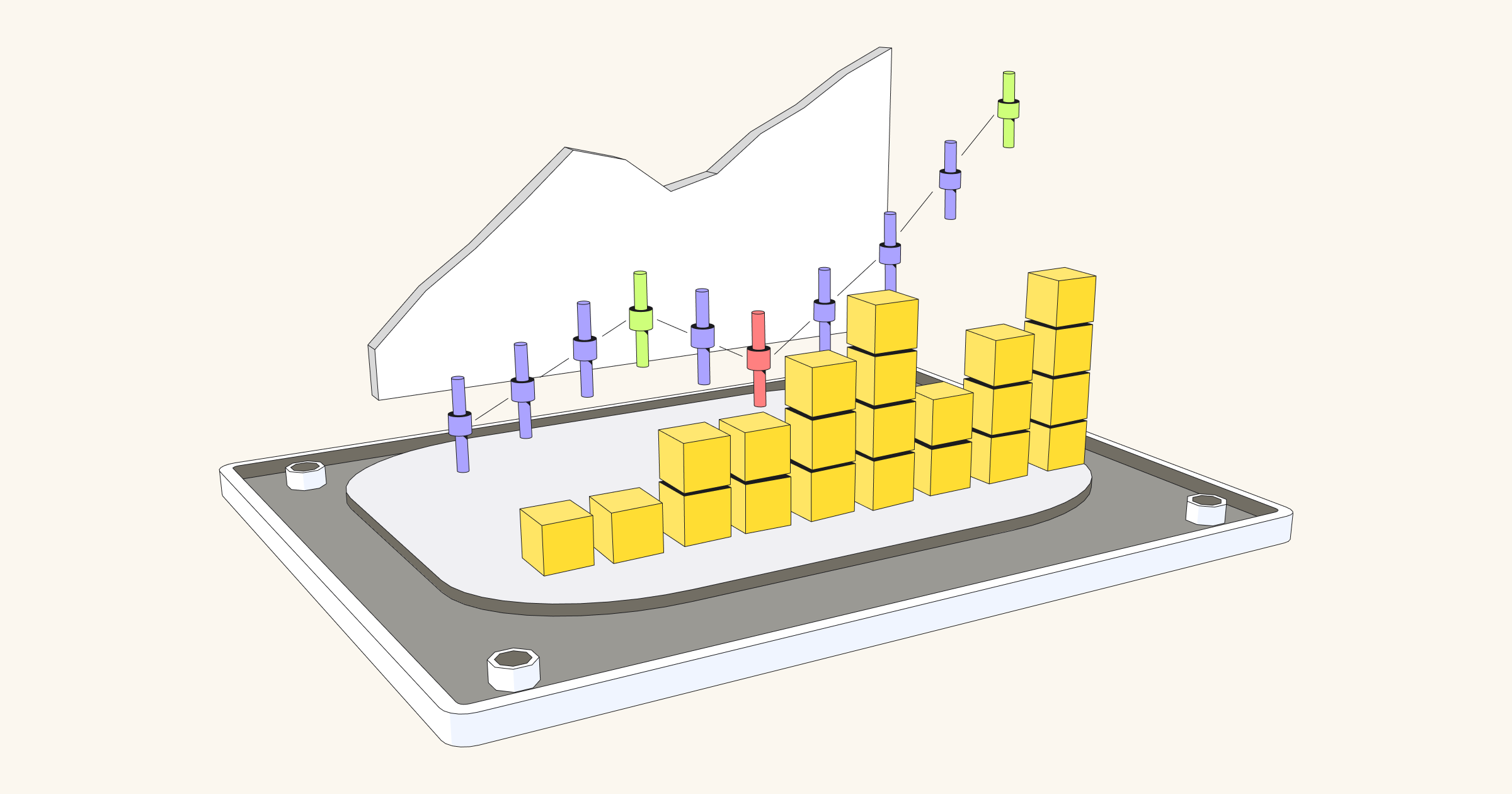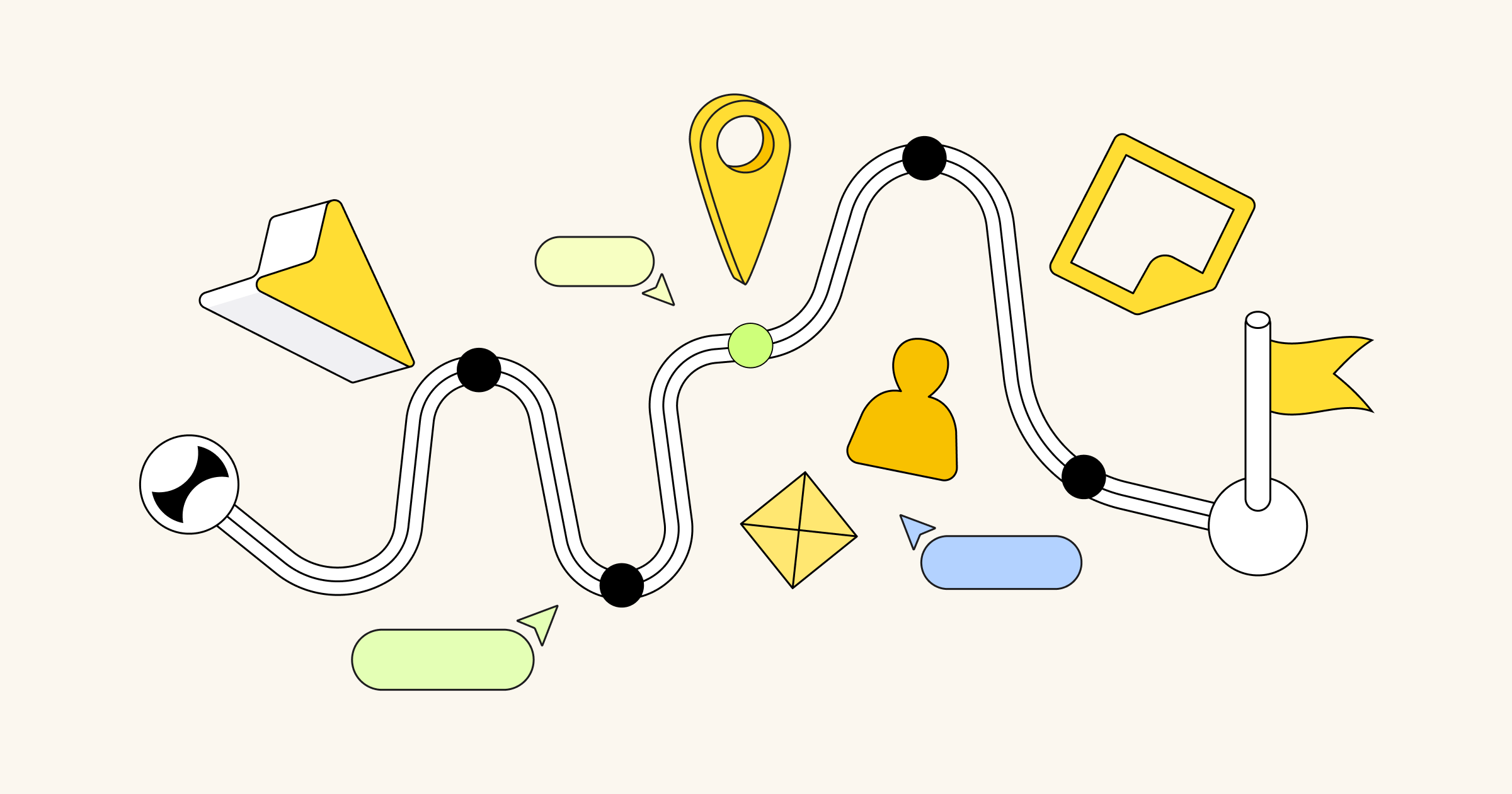Visual thinking is one of the most valuable parts of the creative process. It helps you think: drawing makes you get specific with your ideas and see them in new ways, so you can continue to iterate.
Visual thinking frees up mental energy, offloading some memory into external displays and taking advantage of the human capacity to recognize patterns.
Visualizing ideas also helps you communicate better. As humans, we’ve used visual tools like maps to tell stories for centuries. Although visual synthesis is an underdeveloped skill for most of us, once we develop it, it quickly becomes a super power, unlocking powerful insights.
Mapping: Synthesizing what you’ve learned
Mapping is a visual framework that can be extremely useful for product teams. Maps come in all shapes and sizes: experience maps, customer journey maps, life of the customer maps, user story maps, mind maps, process maps, network maps, empathy map templates, and so on.
Mapping is something I use heavily in the continuous discovery practice I coach teams on. During continuous discovery, teams hear lot of information from customers, identify many different opportunities, and generate multiple solutions. Mapping is a critical way for teams to synthesize all this information, agree on the key points, and use action plan templates to create an action plan for which solutions they’d like to pursue and how they’ll test out their assumptions and experiment to validate those solutions.
I can illustrate the value of mapping to the product development process by walking you through creating an opportunity solution tree, a type of map I developed to help teams keep track of their continuous discovery journey. It’s a simple way of visually representing how you plan to reach a desired outcome. It helps you to make your implicit assumptions explicit. Opportunity solution trees help you to navigate opinion battles, frame your decisions as “compare and contrast” rather than “whether or not,” align around a shared understanding, and communicate how you’ll reach a desired outcome.

How to build an opportunity solution tree
Step 1: Start with a clear, desired outcome
If your team uses OKRs, you might start with one of your Key Results as your desired outcome. If your team doesn’t use OKRs, you can use any single metric that you want to improve—engagement, retention, revenue, customer satisfaction, NPS, or something else. I recommend focusing on one goal or metric per tree.
Step 2: Opportunities should emerge from generative research
It’s important to be continuously seeking opportunities in your market. Every day we learn more about customers, their needs, and their pain points. Frame these needs as opportunities and capture them on your tree.
To get started, you can capture what you think the opportunities are in your problem space. But you’ll want to quickly refine these with generative research.
If you want to build successful products, what matters most is how your customers frame their own problems. Generative research helps you to uncover that. (You can find out more in my Product Talk Continuous Interviewing course).
[rtb_inline_subscription id=”1″ size=”small” header=”Subscribe to our newsletter to learn more about managing product teams” button=”black”]
Step 3: Solutions can and should come from everywhere (as long as they’re bounded by an opportunity)
The tree helps people participate in idea generation in a structured way. Remember, every solution should connect to an opportunity. Solutions should only be considered if they help us deliver on one of our target opportunities. If they don’t connect to the tree, they should be considered a distraction. This sounds simple, but in practice it’s very challenging.
Step 4: Experiment to evaluate your solutions
Experiments reflect the work that you’re doing to test the riskiest assumptions behind your solutions—not your whole solution.
By giving experiments their own row on the tree, it encourages us to think about sets of experiments that will allow us to test a single solution. This helps us escape the trap of over relying on A/B tests to test the whole solution.
Mapping best practices
Here are some of my tips to help your team make the most of your mapping practice.
- Start with individual maps. Have everyone on your team take the time to draw their own maps. This helps to surface everyone’s individual perspectives. We all see the world differently and we want to leverage our unique experiences when creating together.
- Align around a shared map. After exploring the distinct perspectives on your team, use the exercise described in this video to create a shared map. This is one of the most powerful exercises I’ve come across for quickly getting to a shared understanding.
- Map at different scopes. Don’t stop at one map. Maps work well at different scopes. Map the life of your customer. Map a typical day. Map a specific experience. Map their journey through your product for a specific use case. Map out a behind the scenes process that supports that customer journey.
- Map your solutions to specific opportunities. I like to use the opportunity solution tree to visually match solution ideas to real opportunities that we heard in discovery interviews. This guarantees that we are addressing real needs. Taking the time to visually match ideas with needs ensures that we don’t get sidetracked by distractions and it helps us fine-tune our solutions in a customer-centric way.
Remember: maps are living documents
Maps aren’t static. They should reflect what you currently know. If you are continuously learning, they should be continuously evolving.
I encourage teams to draw a customer journey map for every interview they conduct. They then periodically review these journeys and update their canonical journey map.
The opportunity solution tree should evolve week over week as the team learns about the opportunity space and explores solutions via prototyping and experimenting.
User story maps reflect your current understanding of how a solution might work. They should evolve as the solution evolves.




